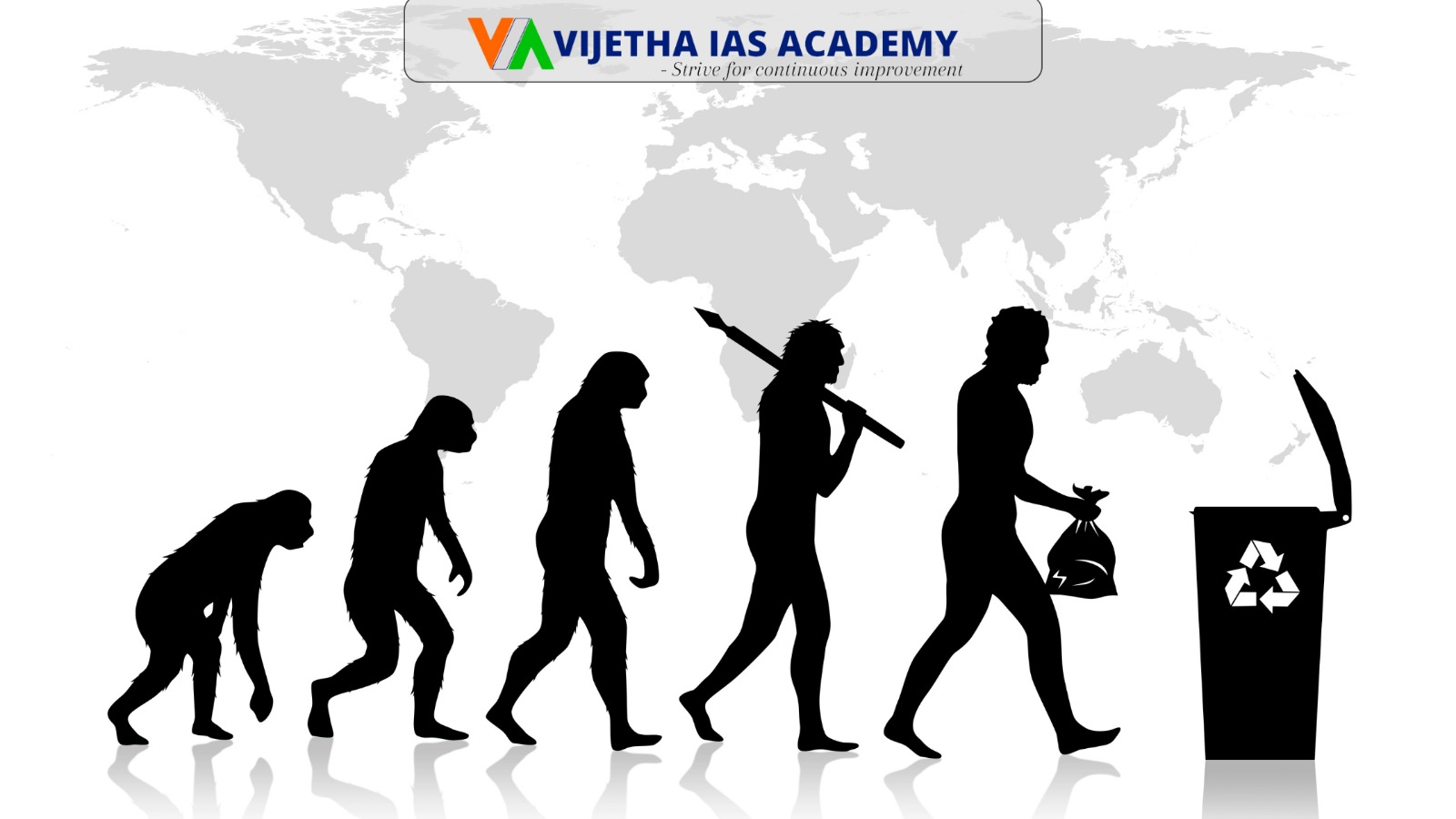
Critically discuss the synergistic effect of biological and cultural factors in human evolution. (15 Marks) Anthropology Optional Paper CSE 2024
Introduction
Human evolution is a complex process shaped by both biological and cultural factors, which interact synergistically to drive the development of Homo sapiens. While biological evolution involves genetic mutations, natural selection, and adaptation to the environment, cultural evolution refers to the development and transmission of knowledge, behaviors, and technologies. These two processes are deeply intertwined, with biological changes influencing cultural developments and vice versa. This synergistic effect has played a crucial role in shaping human physical and cognitive evolution.
Main Body
Biological Factors in Human Evolution:
Genetic Mutations and Natural Selection: Biological evolution is driven by genetic mutations, which, when beneficial, are passed on through natural selection. For example, the evolution of bipedalism allowed early hominins like Australopithecus to move more efficiently on two legs, leading to better survival in open savannahs.
Brain Size and Cognitive Development: One of the most significant biological changes in human evolution is the increase in brain size. The expansion of the brain, particularly the prefrontal cortex, enabled the development of complex cognitive functions like reasoning, language, and problem-solving. This biological change was essential for the development of sophisticated cultural behaviors, including tool-making and social organization.
Adaptation to Environment: Biological evolution also includes physical adaptations to specific environments. For instance, the development of melanin in the skin helped protect early humans in equatorial regions from UV radiation, while lighter skin in populations in northern latitudes facilitated better vitamin D absorption in low sunlight conditions.
Cultural Factors in Human Evolution:
Tool Use and Technology: Early humans began using tools as far back as 2.5 million years ago with Homo habilis, marking the beginning of cultural evolution. The development of tools such as the Acheulian handaxe by Homo erectus allowed for more efficient hunting, food preparation, and adaptation to different environments. Tool use not only increased survival chances but also influenced biological evolution, particularly the development of manual dexterity and brain function.
Fire and Cooking: The control of fire, possibly by Homo erectus, was a pivotal cultural innovation that had profound biological effects. Cooking food made nutrients more digestible, which likely contributed to the shrinking of the human digestive tract and the growth of the brain, supporting the expensive tissue hypothesis. Fire also allowed humans to extend their range into colder climates and protect themselves from predators.
Language and Social Structure: The development of language is both a cultural and biological phenomenon. As humans evolved, changes in the structure of the vocal tract and brain regions associated with speech (such as Broca’s and Wernicke’s areas) enabled the development of complex languages. Culturally, language facilitated better communication, cooperation, and the transmission of knowledge across generations, which enhanced survival and social cohesion.
Synergistic Interaction between Biological and Cultural Evolution:
Diet and Brain Growth: Biological and cultural factors interact in complex ways, such as the relationship between dietary changes and brain development. The cultural practice of cooking food, along with hunting and gathering innovations, led to improved nutrition, which supported the biological growth of the human brain. This in turn enabled more advanced cultural developments such as tool refinement and symbolic thought.
Niche Construction: Humans have the unique ability to engage in niche construction, altering their environment to suit their needs. For example, the development of agriculture allowed humans to shift from a nomadic lifestyle to settled societies, influencing biological factors such as disease exposure and fertility rates. In turn, the biological ability to digest certain grains or milk (lactose tolerance) was selected for in farming populations, demonstrating the feedback loop between culture and biology.
Evolution of Social Cooperation: Human cooperation and social structures are another area where biology and culture are deeply intertwined. The biological evolution of oxytocin and other hormones that promote bonding and social cooperation facilitated the development of complex cultural institutions like kinship, marriage, and political systems. These institutions, in turn, reinforced social cohesion and increased the chances of survival for human groups.
Criticism of the Synergistic Model:
Overemphasis on Culture: Some critics argue that the synergistic model overemphasizes the role of culture in human evolution at the expense of biological factors. They contend that cultural changes alone cannot explain key biological shifts like bipedalism or brain expansion, which were driven primarily by environmental pressures and natural selection.
Undervaluing Biological Constraints: Others suggest that while culture has undoubtedly influenced human evolution, biological constraints still play a significant role. For example, despite cultural advancements, certain biological limits, such as the size of the birth canal, have restricted the pace of certain evolutionary changes like brain size.
Conclusion
The concept of a synergistic relationship between biological and cultural factors is central to understanding human evolution. Biological changes like increased brain size and bipedalism enabled early humans to engage in more complex cultural activities, such as tool use and social cooperation, while cultural innovations like fire control, agriculture, and language further shaped biological evolution. Despite criticisms of overemphasizing culture or undervaluing biological constraints, this synergistic model provides a comprehensive understanding of how humans have evolved into the complex, adaptable species we are today.







